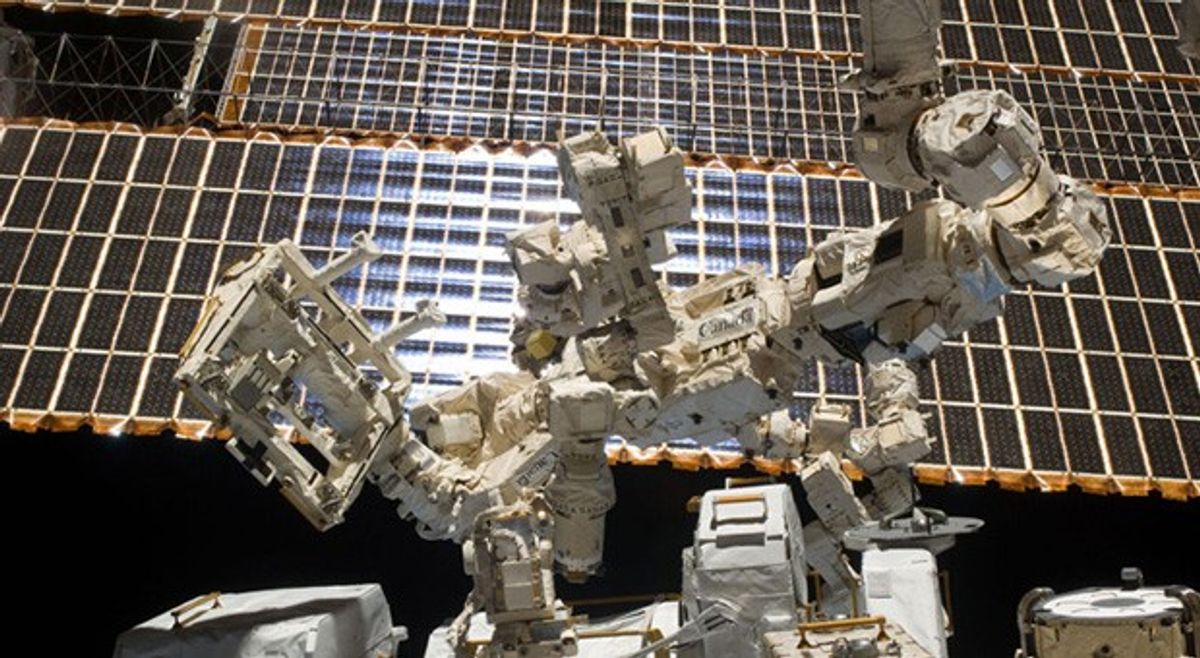If Opportunity and Curiosity aren't impressive enough robots for you, you should probably have your head examined, but until you can find the time for that, here are some other fairly awesome robots from NASA that have been in the news this week: one of them pumps gas, and the other one digs dirt. Yeah, maybe they don't sound awesome, but just trust us on this, okay?
Awesome NASA robot #1 is Dextre, who this week successfully completed a test refueling of a mock satellite on the exterior of the ISS. Successful is good, but what's most important about the test is that the mock satellite that Dextre refueled was mock-designed not to be refueled at all. With a few very pricey exceptions (like Hubble), satellites are not designed to be serviced, but Dextre showed that it could use tools to crack open normal satellites and pump fuel into them anyway.
In this latest set of operations, Dextre removed two safety caps, cut through two sets of thin retaining wires, and finally transferred a small quantity of liquid ethanol into the washing machine-sized module. The latter maneuver was particularly tricky, since handling liquids in space required perfect precision to prevent dangerous leaks. The specialized tools built for the job allowed Dextre to seal the connections between the tool and the fuel valve to eliminate the possibility of leaks. Adding to the level of difficulty was the fuel hose itself, which adds additional forces that tend to pull Dextre's hands. It took the combined skills of the experienced NASA and CSA robotics controllers to pull off this first-of-a-kind space refueling demonstration successfully and without any mishap.
We're hoping for some video of this later in the week; it's not going to be the most action-packed thing you've ever seen, but the potential for refueling satellites is potentially kind of a big deal. And thanks to a space robot, it's now a full service station.
This little guy is named RASSOR, which is obviously pronounced "razor" and equally obviously stands for "Regolith Advanced Surface Systems Operations Robot." Regolith is a fancy geology word for dirt, and RASSOR is designed to autonomously drive around the Moon and scoop up dirt with those toothy drums. The entire robot only weighs about 100 pounds, but it can haul up to 40 pounds of dirt. The idea is that RASSOR would be sent to the Moon along with a larger lander, and then autonomously rove around 16 hours a day, pouring loads of dirt into a processing plant on the lander which would extract water, hydrogen, and oxygen from it. Let the system run for long enough, and we could head to the Moon knowing that there's a nice big pile of water, air, and rocket fuel waiting there for us.
We've only just heard about RASSOR, but already NASA is designing RASSOR 2, which would be a prototype of the system that may actually get sent to the Moon. RASSOR 2 is expected to start digging around some fake lunar soil in tests by 2014.
Evan Ackerman is a senior editor at IEEE Spectrum. Since 2007, he has written over 6,000 articles on robotics and technology. He has a degree in Martian geology and is excellent at playing bagpipes.




